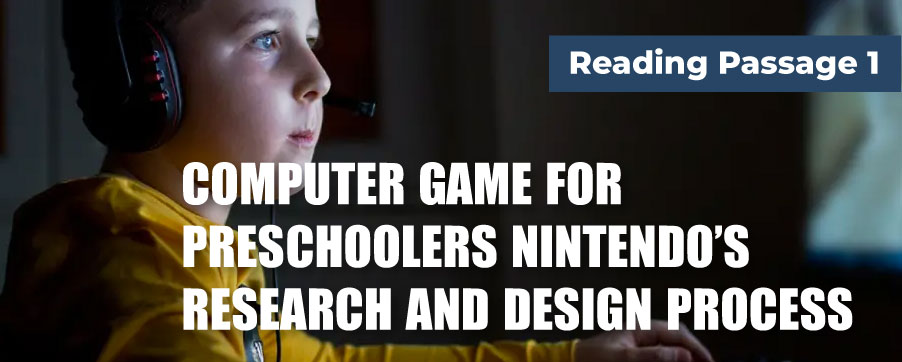
IELTS Recent Mock Tests Volume 4
- Đăng ngày: 29 Nov 2017
- Tests taken: 1,174,568
Đáp án
Part 1: Question 1 - 13
- 1 abilities
- 2 parents
- 3 markets
- 4 siblings/peers
- 5 experienced
- 6 NOT GIVEN
- 7 NOT GIVEN
- 8 TRUE
- 9 FALSE
- 10 firm
- 11 simplicity
- 12 full version
- 13 feedback
- 1 abilities
- 2 parents
- 3 markets
- 4 siblings/peers
- 5 experienced
- 6 NOT GIVEN
- 7 NOT GIVEN
- 8 TRUE
- 9 FALSE
- 10 firm
- 11 simplicity
- 12 full version
- 13 feedback
Part 2: Question 14 - 26
- 14 tree
- 15 soft
- 16 sheep
- 17 mines
- 18 string
- 19 clay
- 20 mechanical/grease
- 21 TRUE
- 22 NOT GIVEN
- 23 FALSE
- 24 FALSE
- 25 FALSE
- 26 FALSE
- 14 tree
- 15 soft
- 16 sheep
- 17 mines
- 18 string
- 19 clay
- 20 mechanical/grease
- 21 TRUE
- 22 NOT GIVEN
- 23 FALSE
- 24 FALSE
- 25 FALSE
- 26 FALSE
Part 3: Question 27 - 40
- 27 C
- 28 A
- 29 D
- 30 B
- 31 C
- 32 34 A,E,F
- 35 NOT GIVEN
- 36 NOT GIVEN
- 37 NO
- 38 YES
- 39 NO
- 40 NOT GIVEN
- 27 C
- 28 A
- 29 D
- 30 B
- 31 C
- 32 34 A,E,F
- 35 NOT GIVEN
- 36 NOT GIVEN
- 37 NO
- 38 YES
- 39 NO
- 40 NOT GIVEN
Leaderboard:
| # | Thành viên | Điểm | Thời gian | |
|---|---|---|---|---|
| thanhson0145 |  | 9.0 | 16:42 | |
| mahfuz ahmed |  | 9.0 | 16:48 | |
| Monineath Rithy |  | 9.0 | 17:53 | |
| 4 | Khanh Nam |  | 9.0 | 18:17 |
| 5 | Maria Saengpanich |  | 9.0 | 18:57 |
| 6 | Keigo Aizono |  | 9.0 | 19:37 |
| 7 | thái nguyễn |  | 9.0 | 21:25 |
| 8 | Minh Nguyen |  | 9.0 | 21:30 |
| 9 | Binduja B |  | 9.0 | 21:35 |
| 10 | Nguyễn Hải Hà |  | 9.0 | 21:47 |
Giải thích chi tiết
Questions 1-5
- Determine the relevant 1 in the context
- Observe how preschoolers manage playing
- Investigate attitudes of 2 towards games
- 26 children from different US 3
- Age range: 3 years and 3 months to 5 years and 11 months
- Some children have older 4
- Equal number of new and 5 players
- Some households have Nintendo DS and some don’t
1-2 hours
- 1 Answer: abilities
Keywords in the question
Similar words in the passage
Q1. Determine the relevant _____ in the context
First, to understand the range of physical and cognitive abilities of preschoolers in the context of handheld system game play
Q1. From the question, we can assume that the answer must be a Noun
As mentioned above, “first” is a keyword. Besides, another keyword is “understand” which can be interchangeable with the word "determine" in Q1. The phrase “in the context” is repeated and "relevant" (adjective) means relating to a subject in an appropriate way.
In this context, the word "relevant" in Q1 is used instead of the phrase "physical and cognitive" in the passage. Therefore, the correct answer for this question is abilities.
- 2 Answer: parents
Keywords in the question
Similar words in the passage
Q2. Investigate attitudes of ______ towards games
Third, to understand the expectation of preschooler’s parents concerning the handheld systems as well as the purchase and play contexts within which game play occurs.
Q2. From the question, we can assume that the answer must be a Noun.
“Investigate” means researching to find out something or, in this context, “to understand” something.
"attitudes" and "expectation" are interchangeable in this context. With all these clues, we can conclude that the correct answer for this question is parents.
- 3 Answer: markets
Keywords in the question
Similar words in the passage
Q3: 26 children from different US ______.
we start by conducting 26 in-home ethnographies in three markets across the United States
Q3: From the question, we can assume that the answer must be a Noun.
+ The sentence contains 3 keywords, so the answer must be somewhere in this sentence.
+ "ethnography” means "the study of human races and cultures". In this context, the phrase "in-home ethnographies" has been replaced with the word "children" in question 3.
+ The phrase "from different US" is the paraphrase of "three markets across the United States" with the word "markets" missing. Therefore, the answer for this question is markets
- 4 Answer: siblings/peers
Keywords in the question
Similar words in the passage
Q4: Some children have older _________
Also, because previous research had shown the effects of older siblings on game play [...], households were employed to have a combination of preschoolers with and without elder peers.
From the question, we can assume that the answer must be a Noun.
This question asks for the information of this research's subject. Let's take a look at the second sentence of the 2nd paragraph. There are some keywords and synonyms of the keywords in question 4 in this sentence:
+ "Preschoolers" refers to "some children"
+ "older siblings" and "elder peers" have the same meaning and are the hint to answer this question. We can easily find the correct answer is siblings or peers.
- 5 Answer: experienced
Keywords in the question
Similar words in the passage
Q5. Equal number of new and ________ players
both “experienced” and “new” preschool users of the platform
+ From the question, we can assume that the answer must be an Adjective.
+ Take a look in sentence “both “experienced” and “new” preschool users of the platform”, “preschool users” is similar meaning with “players”. This sentence means the number of “experience” and “new” players is the same.
Answer: experienced
Questions 6-9
Do the following statements agree with the information given in Reading Passage?
In boxes 6-9 on your answer sheet, write
| TRUE | if the statement agrees with the information |
| FALSE | if the statement contradicts the information |
| NOT GIVEN | If there is no information on this |
6 One area of research is how far mothers and fathers controlled children’s playing after school.
7 The researchers are allowed a free access to the subjects' houses.
8 The researchers regarded The Little Mermaid: Ariel’s Undersea Adventure as likely appeal to preschoolers.
9 The Little Mermaid: Ariel’s Undersea Adventure is operated entirely by hand controls.
- 6 Answer: NOT GIVEN
Keywords in the question
Similar words in the passage
Q6: One area of research is how far mothers and fathers controlled children’s playing after school.
We gathered data about: the buying decisions surrounding game systems in the household, the family’s typical game play patterns, levels of parental moderation with regard to computer gaming, and the most favorite games play by family members.
Take a look in the 2nd sentence in the 3rd paragraph. We can see that the passage mentioned the levels of parental moderation, which is the same as how far mothers and fathers controlled. But there’s no information about the control of parents on children’s playing after school in this passage. Therefore, the answer for this question is NOT GIVEN.
- 7 Answer: NOT GIVEN
Keywords in the question
Q7: The researchers are allowed a free access to the subjects' houses.
There is no information about whether researchers are allowed to access subjects' houses freely or not. Therefore, the answer for this question is NOT GIVEN.
- 8 Answer: TRUE
Keywords in question
Similar words in the passage
The researchers regarded The Little Mermaid: Ariel’s Undersea Adventure as likely appeal to preschoolers.
The researchers asked all of the preschoolers to play with a specific game in consultation with our producers, The Little Mermaid: Ariel’s Undersea Adventure. The game was chosen for two major reasons. First, it was one of the few games on the market with characters that appeal to this young age group.
Q8: Take a look in the sentence, we can see that there are 2 major reasons why The Little Mermaid: Ariel’s Undersea Adventure was asked of the preschoolers to play. The first reason mentioned is this game has appeal character to preschoolers.
“Preschoolers” in this context refers to “young age group”.
Answer: TRUE
- 9 Answer: FALSE
Keywords in the question
Similar words in the passage
The Little Mermaid: Ariel’s Undersea Adventure is operated entirely by hand controls.
Second, it incorporated a large variety of mechanics that highlighted the uniqueness of the DS platform, including using the microphone for blowing or singing.
Q9: In the question, The Little Mermaid: Ariel’s Undersea Adventure is controlled by hand.
However, in the passage, second reason mentioned is that this game incorporated a large variety of mechanics
Answer: FALSE
Questions 10-13
Complete the flow-chart below.
Choose NO MORE THAN TWO WORDS from the passage for each answer.
Write your answer in boxes 10-13 on your answer sheet.
| Using the results of the study |
| ↓ |
| Presentation of design requirements to a specialist 10 |
| ↓ |
| Testing the mechanics of two new games in the Nintendo lab (assess 11 and interest) |
| ↓ |
| A 12 of the games trailed be twelve children |
| ↓ |
| Collection of 13 from parents |
- 10 Answer: firm
Keywords in the question
Similar words in the passage
Presentation of design requirements to a specialist ________
We then outlined the designing needs and presented the findings to a firm specializing in game design.
Q10: From the question, we can assume that the answer must be a Noun.
+ Take a look at the sentence “We then outlined the designing needs and presented the findings to a firm specializing in game design”.
In this context, some words have been transformed for paraphrased:
present (v) => presentation (n)
specialist (a) => specializing (n)
“design requirements” => “designing needs”
After crossing out the keywords, we have one suitable word left and it is the correct answer: firm
- 11 Answer: simplicity
Keywords in the question
Similar words in the passage
Testing the mechanics of two new games in the Nintendo lab (assess _______ and interest)
Two DS games went into the development process [...] we brought preschoolers into our in-house utility lab to test the mechanics and to evaluate both their simplicity, and whether they were engaging.
Q11: From the question, we can assume that the answer must be a Noun.
This question mentioned that testing two new games. We can skim that “Two DS games went into the development process” means that two DS games are testing. We can see that tests evaluate engaging as well as simplicity
Interest is the same meaning with engage
Answer: simplicity
- 12 Answer: full version
Keywords in the question
Similar words in the passage
A _______ of the games trailed be twelve children
Once a full version of the DS game was ready, we went back into the field test with a dozen preschoolers
Q12:
In this context, “twelve children” has the same meaning as “a dozen preschoolers”.
The answer for this question is quite easy to detect, and it is “full version”.
- 13 Answer: feedback
READING PASSAGE 1
You should spend about 20 minutes on Questions 1-13 which are based on Reading Passage 1 below.

Computer games for Preschoolers Nintendo’s Research and Design Process
Designing computer games for young children is a daunting task for game producers, who, for a long time, have concentrated on more “hard core” game fans. This article chronicles the design process and research involved in creating Nintendo DS for preschool gamers.
After speaking with our producers who have a keen interest in designing for the DS, we finally agreed on three key goals for our project. First, to understand the range of physical and cognitive abilities of preschoolers in the context of handheld system game play; second, to understand how preschool gamers interact with the DS, specifically how they control the different forms of play and game mechanics offered by the games presently on the market for this platform; third, to understand the expectation of preschooler’sparents concerning the handheld systems as well as the purchase and play contexts within which game play occurs. The team of research decided that in-home ethnographies with preschoolers and their families would yield comprehensive database with which to give our producers more information and insights, so we start by conducting 26 in-home ethnographies in three markets across the United States: an East coast urban/suburban area, a West coast urban/suburban area, and a Midwest suburban/rural area.
The subject is this study included 15 girls and 11 boys ranging from 3 years and 3 months old to 5 years and 11 months old. Also, because previous research had shown the effects of older siblings on game play (demonstrated, for example, by more advanced motor coordination when using a computer mouse), households were employed to have a combination of preschoolers with and without elder peers. In order to understand both “experienced” and “new” preschool users of the platform, we divided the sample so that 13 families owned at least one Nintendo DS and the others did not. For those households that did not own a DS, one was brought to the interview for the kid to play. This allowed us to see both the instinctive and intuitive movements of the new players (and of the more experienced players when playing new games), as well as the learned movements of the more experienced players. Each of those interviews took about 60 to 120 minutes and included the preschooler, at least one parent, and often siblings and another caregiver.
Three kinds of information were collected after each interview. From any older siblings and the parents that were available, we gathered data about: the buying decisions surrounding game systems in the household, the family’s typical game play patterns, levels of parental moderation with regard to computer gaming, and the most favorite games play by family members. We could also understand the ideology of gaming in these homes because of these in-home interviews: what types of spaces were used for game play, how the system were installed, where the handheld play occurred in the house (as well as on-the-go play), and the number and type of games and game systems owned. The most important is, we gathered the game-playing information for every single kid.
Before carrying out the interviews, the research team had closely discussed with the in-house game producers to create a list of game mechanics and problems tied to preschoolers’ motor and cognitive capabilities that were critical for them to understand prior to writing the games. These ranged from general dexterity issues related to game controllers to the effectiveness of in-game instructions to specific mechanics in current games that the producers were interested in implementing for future preschool titles. During the interviews, the moderator gave specific guidance to the preschooler through a series of games, so that he or she could observe the interaction and probe both the preschooler and his or her parents on feelings, attitudes, and frustrations that arose in the different circumstances.
If the subject in the experiment had previous exposure to the DS system, he or she was first asked to play his or her favorite game on the machine. This gave the researchers information about current level of gaming skill related to the complexity of the chosen one, allowing them to see the child playing a game with mechanics he or she was already familiar with. Across the 26 preschoolers, the Nintendo DS selections scope were very broad, including New Super Mario Bros, Sonic Rush, Nintendogs, and Tony Hawk’s Proving Ground. The interview observed the child play, noting preferences for game mechanic and motor interactions with device as well as the complexity level each game mechanic was for the tested subject. The researchers asked all of the preschoolers to play with a specific game in consultation with our producers, The Little Mermaid: Ariel’s Undersea Adventure. The game was chosen for two major reasons. First, it was one of the few games on the market with characters that appeal to this young age group. Second, it incorporated a large variety of mechanics that highlighted the uniqueness of the DS platform, including using the microphone for blowing or singing.
The findings from this initial experiment were extensive. After reviewing the outcomes and discussing the implications for the game design with our internal game production team, we then outlined the designing needs and presented the findings to a firm specializing in game design. We worked closely with those experts to set the game design for the two preschool-targeted DS games under development on what we had gathered.
As the two DS games went into the development process, a formative research course of action was set up. Whenever we developed new game mechanics, we brought preschoolers into our in-house utility lab to test the mechanics and to evaluate both their simplicity, and whether they were engaging. We tested either alpha or beta versions of different elements of the game, in addition to looking at overarching game structure. Once a full version of the DS game was ready, we went back into the field test with a dozen preschoolers and their parents to make sure that each of the game elements worked for the children, and that the overall objective of the game was understandable and the process was enjoyable for players. We also collected parent’s feedback on whether they thought the game is appropriate, engaging, and worth the purchase.






